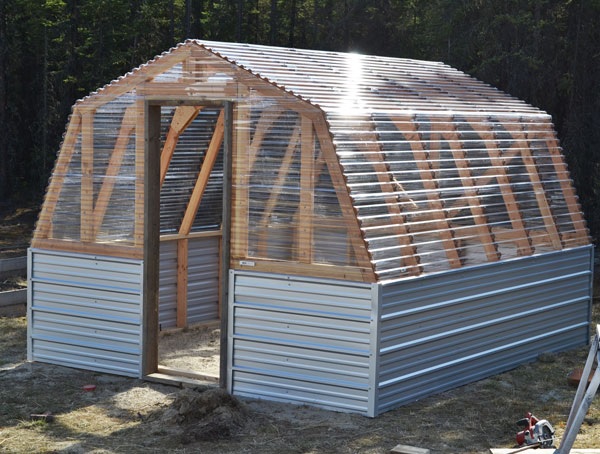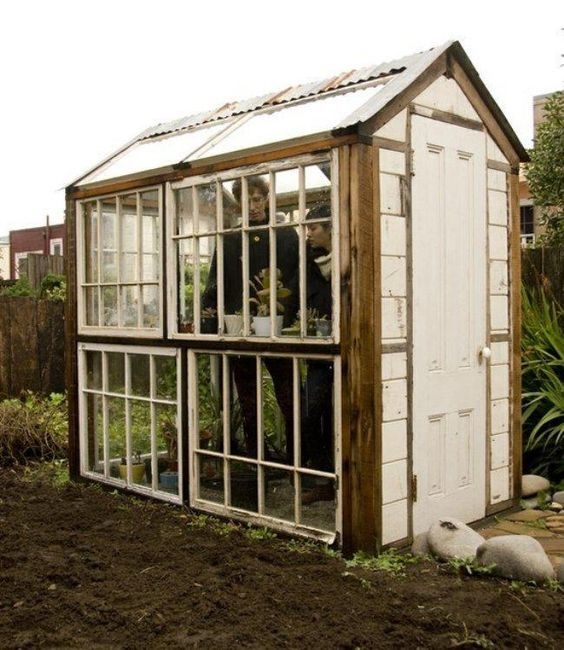 Thinking About a Greenhouse? - September 28, 2016 Jeff Schalau, Agent, Agriculture & Natural Resources University of Arizona Cooperative Extension, Yavapai County A simple greenhouse can be used to grow greens in the winter, start warm season seedlings, propagate landscape plants, or provide shelter to frost tender plants during winter. Conversely, a more advanced greenhouse can be used to grow year-round vegetables or tender specimen plants. The costs of building a hobby greenhouse can vary from several hundred dollars to thousands, and operating costs can also be high if year-round heating and cooling are required. New hobby greenhouse kits are available for between $2,000 and $5,000. Shop the Internet, browse craigslist.org, and watch the classified ads for used ones. Before buying, decide on the features you want, then start compiling your information and prices. If you want to build your own, look at different designs/construction materials and research it thoroughly. Greenhouse styles vary widely. Appearance could be important if your greenhouse will be prominently located in your landscape. A bright, sunny location and water availability are critical. Remember to consider the lower sun angle in the winter months and avoid placing a greenhouse where light will be limiting. A-frame models are inexpensive but have little usable space. Lean-tos or attached greenhouses can introduce moisture to the main structure and cause problems if not properly designed and maintained. Domes are interesting to look at, but hard to regulate temperature. The Quonset, gothic arch, and pitched roof are the most common designs with ample usable space. The size of the greenhouse depends on needs and space. If you think you want to get serious about greenhouse growing, then bigger is better. Unused space may initially seem like a waste. Later, you may wonder how you did without it. 80 square feet (8' x 10') should be a minimum starting point. If you have any doubts, you may consider a design that can be expanded. In a greenhouse, you must think about growing space in all three dimensions. Vertical space use can be optimized with shelves, hanging baskets, or providing support to vining crops like tomatoes. Each type of covering material has advantages and disadvantages. Common materials are glass, polyethylene film, fiberglass reinforced panels, and polycarbonate double layer panels. Glass is the gold standard against which all other materials are judged. It transmits light well, is attractive with a formal appearance. Disadvantages are breakability, expense, and weight (it needs a strong frame). Polyethylene film (PE) is a good choice for home-built greenhouses and hoop houses. It is inexpensive and light weight, but lasts for two or three years. Fiberglass reinforced panels (FRPs) come in many grades and may be acrylic or polycarbonate. They are also lightweight and retain heat better than glass. FRPs are often used on Quonset style greenhouses. Double-layer structured panels have an open space inside them so they have added insulating properties but decreased light transmission. If you are considering year-round growing, you will need a cooling system such as a swamp cooler or other evaporative system (simple vents on the roof or walls are not sufficient to cool a greenhouse in our climate). A good rule of thumb for cooling is to have the capacity to completely exchange the air inside the greenhouse within one minute. Heating and heat loss should also be considered. Be especially mindful of how well the roof and upper areas are sealed. Heat rises and can escape easily if these joints are not tightly sealed. There are many excellent books with greenhouse plans as well as cooling and heating systems. Will you grow in soil, soilless organic media, or hydroponically (growing plants using nutrient solution flowing through an inert media)? Considerations here include crops to be grown, their tendency for disease problems, and expense. Crops like tomatoes and peppers are susceptible to a host of soil-borne diseases and are suited to hydroponic culture. Cacti and flowers can be easily grown in pots. Cuttings can be started in sand or a custom soil media. Providing an optimum environment for plant growth also creates an optimum environment for insect pests. Common greenhouse pests include mealy bugs, thrips, whiteflies, spider mites, aphids, and scale. Cleanliness and sanitation will help prevent many problems, but these pests will most certainly find their way into your greenhouse over time. Most greenhouse gardeners use natural enemies rather than pesticides to keep these pests in check. I hope this article helps you think about some of the important factors of greenhouse management before you get in over your head. I have included additional greenhouse information and photos below. Follow the Backyard Gardener on Twitter – use the link on the BYG website. If you have other gardening questions, call the Master Gardener help line in the Camp Verde office at 928-554-8992 or e-mail us at verdevalleymg@gmail.com and be sure to include your name, address and phone number. Find past Backyard Gardener columns or provide feedback at the Backyard Gardener web site: http://cals.arizona.edu/yavapai/anr/hort/byg/. Photos  This greenhouse was constructed from new materials and seems like a serviceable design for north central Arizona. In addition to a door, it would need additional ventilation (evaporative cooler) to stay cool year-round. It would also need additional caulking to prevent heat loss in winter. This design is available at: http://www.ana-white.com/2012/05/plans/barn-greenhouse.  This greenhouse was constructed from used materials. It is small, but would work well for growing garden transplants. It has hinged windows to allow ample air flow. Always consider your needs before committing to a design. Most small greenhouses are not used to their fullest potential because they get too hot in the summer and too cold in the winter. Additional Resources Hobby Greenhouses Clemson Cooperative Extension www.clemson.edu/extension/hgic/plants/other/landscaping/hgic1704.html Hobby Greenhouses University of Georgia Extension extension.uga.edu/publications/detail.cfm?number=B910 Hobby Greenhouses in Tennessee University of Tennessee Extension extension.tennessee.edu/publications/Documents/pb1068.pdf |